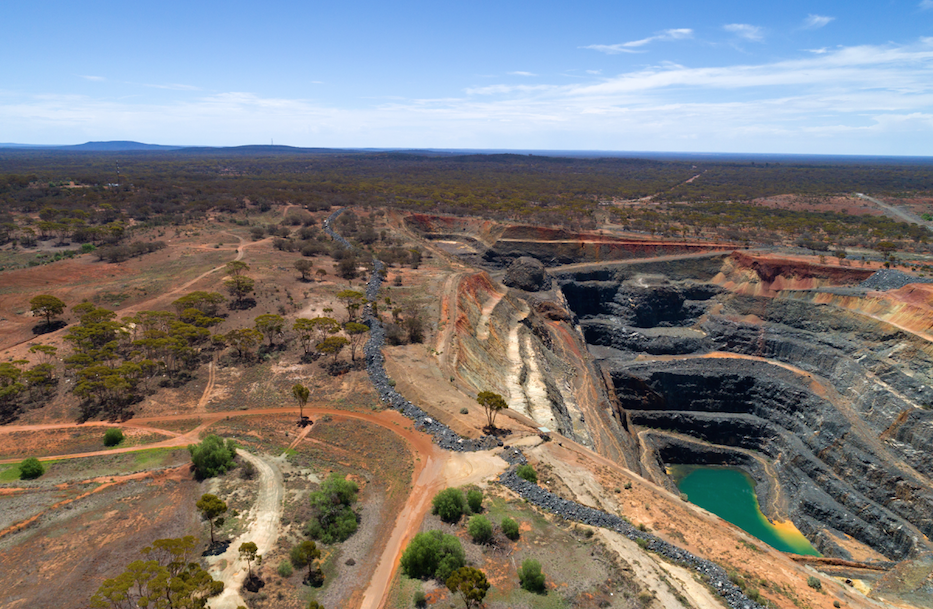
An updated prefeasibility study for Coolgardie outlines proven and probable reserves of 6.6 million tonnes grading 1.97 grams gold for 422,000 ounces. About A$28 million ($20.8 million) of the A$48 million ($35.7 million) pre-production capex budget is to be spent rehabilitating the existing Three Mile Hill mill and tailings containment. The remaining A$20 million ($14.8 million) will go toward the development of two open pits and an underground mine. The project carries an after-tax net present value at a 7.5% discount rate of A$183 million ($136 million) and an internal rate of return of 71%.
Focus is the largest landholder in the Coolgardie camp, and has explored only 2% of the area so far. The company is planning an exploration program to test the potential for new, higher grade orebodies near the mill as well as a regional program near Coolgardie.
The Laverton property includes the high-grade underground Lancefield gold mine as well as several large open pits that have been mined by Focus and its predecessors. Focus is interested in expanding open pit resources, testing underground targets, and exploring targets that could lead to large-scale bulk mining at Laverton.
A prefeasibility study for the first stage of production at Laverton was completed in March. With a refurbished Barnicoat mill, the project metrics include a pre-tax net present value (5% discount rate) of A$132 million ($98 million) based on mining oxide and transition material in five deposits.
The Laverton resource includes 921,000 measured tonnes grading 2 grams gold per tonne, 42.4 million indicated tonnes at 1.6 grams gold, and 17.9 million inferred tonnes grading 2.5 grams gold. There are an estimated 3.6 million oz. of gold in all categories.
Focus is concentrating its efforts on transitioning both Coolgardie and Laverton to mine-ready projects by growing its resource base and preparing for eventual mining.
Karora Resources
Karora Resources (TSX: KRR; US-OTC: KRRGF) has two producing mines in Western Australia — the Beta Hunt underground gold and nickel mine and the Higginsville gold operation. The company, which recently changed its name from RNC Minerals, is focusing its efforts on becoming a pure gold play. It has sold its 28% interest in the Dumont nickel project and is concentrating on doubling annual production to 200,000 oz. gold in 2024.
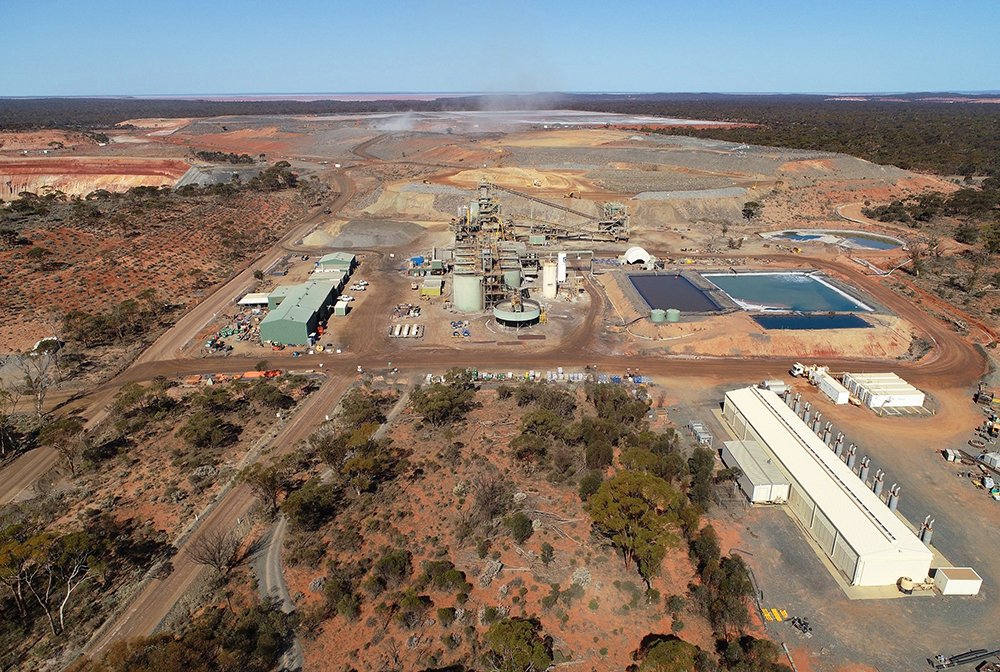
Expansion work includes developing a second decline at the Beta Hunt mine and the second phase of mill expansion at Higginsville to 2.5 million tonnes annually. The new Beta Hunt decline will be driven parallel to the orebody. Recent drilling has expanded the gold mineralization both along strike and down dip. Drilling up-plunge of the A zone and Western Flanks has intersected a gold shear zone that may become a source of near-term production as the decline advances.
Additional nickel discoveries including the 30C and 50C/Gamma zones were also made at Beta Hunt. The 50C zone intersected 11.6% nickel over 4.6 metres, including 18.4% over 2.2 metres. Drilling the 30C trough returned grades of 8.6% nickel over 1 metre and 7.7% nickel over 1.3 metres. A dedicated nickel exploration team has been created to pursue the base metal finds.
The Beta Hunt expansion is supported by proven and probable reserves of 5.8 million tonnes grading 2.6 grams gold per tonne, measured and indicated resources of 12 million tonnes grading 2.7 grams gold, and inferred resources of 6.1 million tonnes at 2.7 grams gold.
Karora’s second major producing centre is Higginsville is divided into two districts: the Central district, the higher grade core that is considered a near- and medium-term ore source, and the larger Greater district which is seen as a potential long-term source of mill feed. In the Central district at the Aquarius gold project, a portal has been established and a decline development is underway. Stope development is scheduled for the fourth quarter of 2021. Development ore will be mined and milled to help offset capital costs.
Pre-development work also began on the Spargos gold mine, which will begin feeding the Higginsville mill by the end of September. This will be an open pit as drilling at depth and along strike continues. High-grade gold intercepts here have confirmed the mineralization extends to over 300 metres down-plunge and remains open at depth. The Spargos deposit has measured and indicated resources of 1.1 million tonnes grading 3.0 grams gold, containing 105,000 oz. gold. There is also an inferred resource of 401,000 tonnes at 3.5 grams gold, containing 45,000 oz. gold. A new estimate will be made this year.
The past-producing Two Boys high-grade gold mine at Higginsville is to be restarted as well. Development will reach remnant and new ore by the end of September. The Higginsville mill is the site of an A$50 million ($37 million) mill expansion to treat ore from the increased number of sources. The list of improvements is long: a new SAG mill and extension of the feed conveyor; repurposing a portion of the crushing circuit as a pebble crusher; more leach feed screen, carbon-in-leach tanks and thickener; upgrades to process water plant and the tailings pipeline, and other infrastructure.
Karora says it is considering a listing on the Australian Stock Exchange.
Kirkland Lake Gold
Toronto-headquartered Kirkland Lake Gold (TSX: KL; NYSE: KL; ASX: KLA) is a senior gold producer operating in Canada and Australia. The company has three significant producing mines: the Macassa and Detour Lake mines in the Canadian province of Ontario and the Fosterville mine in Australia’s state of Victoria. Last year the company produced a total of 1.37 million oz. of gold and this year forecasts production of 1.3-1.4 million ounces.
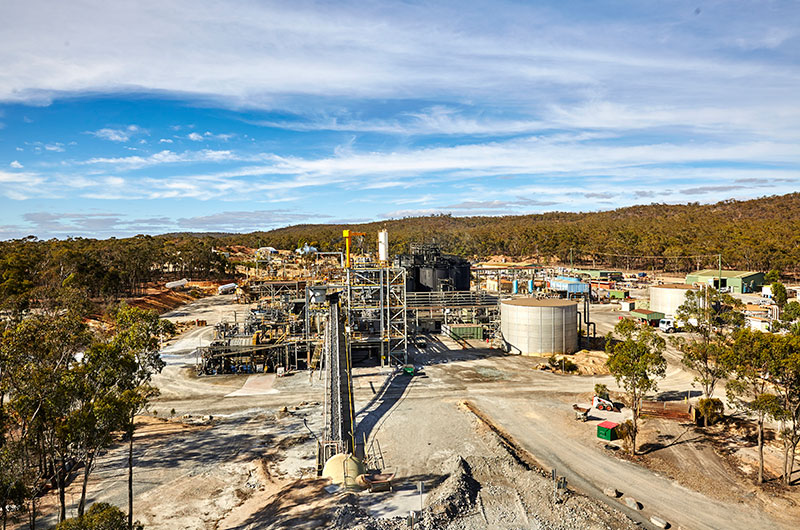
Fosterville is the largest gold producer in Victoria and is an orogenic gold deposit.
Fosterville started off as a low-grade open-pit mine in 2005, but after previous owners discovered the high-grade Eagle zone in 2015, Fosterville transitioned to an underground operation.
Kirkland Lake Gold saw the mine’s potential and obtained 100% ownership of the asset when it took over Newmarket Gold in 2016.
The following year, Kirkland Lake discovered a second high-grade zone, Harrier, at depth. Grades and resources continued to grow with the discovery of the down-plunge high-grade Lower Phoenix gold system, and in particular the Swan zone (previously known as the Lower Phoenix footwall), which by itself contributed over 500,000 oz. of gold to the updated reserve estimate in 2017.
At the end of last year, Fosterville reported proven and probable reserves of 3.6 million tonnes grading 15.4 grams gold per tonne for 1.8 million oz. of contained gold. (Measured resources stand at 7.7 million tonnes grading 5.6 grams gold per tonne for 1.4 million oz. of gold, and inferred resources add 6.1 million tonnes grading 6.5 grams gold per tonne for 1.3 million ounces.
Last year Fosterville produced 640,467 oz. gold and generated almost $23 million in revenue for the company. This year Kirkland Lake believes Fosterville will churn out 400,000-425,000 oz. of gold. In 2022 and 2023, the company is guiding for 325,000-400,000 oz. gold.
The company has earmarked $85 million to $95 million for exploration and development at Fosterville this year.
In Canada, the company’s high-grade Macassa mine in the town of Kirkland Lake, about 580 km north of Toronto, remains one of the highest grade gold mines in the world. The mine, which started operations in 2002, produced 183,038 ounces of gold in 2020.
The Detour Lake open-pit mine, about 300 km northeast of Timmins, produced 516,757 oz. of gold last year and is the second-largest gold producing mine in Canada. The operation has an estimated 22-year mine life with average gold production of 659,000 oz. of gold a year and the company believes there is substantial growth potential.
The company also owns the Holt complex of three mines (Holt, Holloway and Taylor) in Matheson, Ontario. Last year the complex produced 29,391 oz. of gold. Holt and Holloway are accessed by a shaft, while Taylor is accessed by ramp.
Laramide Resources
Laramide Resources (TSX: LAM; ASX: LAM; US-OTC: LMRXF) is a Canadian company headquartered in Toronto and has uranium projects in Australia and the United States.
In Australia, its two main projects are Westmoreland in northwest Queensland and Murphy in the northern territory.

Westmoreland is one of the largest undeveloped uranium deposits in Australia. The company envisions that mining will take place in multiple shallow pits with in-pit tailings disposal. The project has a mine life of 13 years, but the company believes there is potential to extend the mine life to 15 years as drilling continues. Conventional acid leaching and ion exchange technology will be used to produce about 3.5 million lb. uranium oxide (U3O8) per year.
The project has indicated resources of 18.7 million tonnes grading 0.09% U308 for 36.9 million lb. of contained U308, and inferred resources of 9 million tonnes grading 0.08% U308 for 15.9 million lb. of contained U308. The resource estimate used a cut-off grade of 0.02% U308.
Westmoreland’s shallow Redtree deposit contains about 50% of the resources. It is characterized by a mix of horizontal and vertical lenses of continuous mineralization in distinctly coarse pebble conglomerates.
Laramide’s second Australian property, Murphy, is a greenfield opportunity that it acquired from Rio Tinto Exploration last year. The project’s 683 sq. km of tenements are in the Northern Territory’s Murphy uranium province, and are contiguous to and along strike from the Westmoreland project. Laramide acquired an airborne geophysical survey that was flown in 2014, and the next step will be on-the-ground exploration.
Its projects in the U.S. are Churchrock and Crownpoint in New Mexico and the La Sal and Las Jara Mesa projects in Utah and New Mexico.
It plans to complete a preliminary economic assessment this year on Churchrock, an in situ recovery project. Churchrock is situated in McKinley County, and the mineralization consists of a series of stacked roll-front deposits. A 2017 resource estimate outlined 33.9 million inferred tonnes grading 0.075% U308 for 50.8 million lb. U308. Data from previous operators includes a database of 11,667 drill holes.
Mandalay Resources
Mandalay Resources (TSX: MND; US-OTC: MNDJF) operates the Costerfield gold-antimony mine in the state of Victoria, Australia, and the Björkdal gold mine in Sweden.
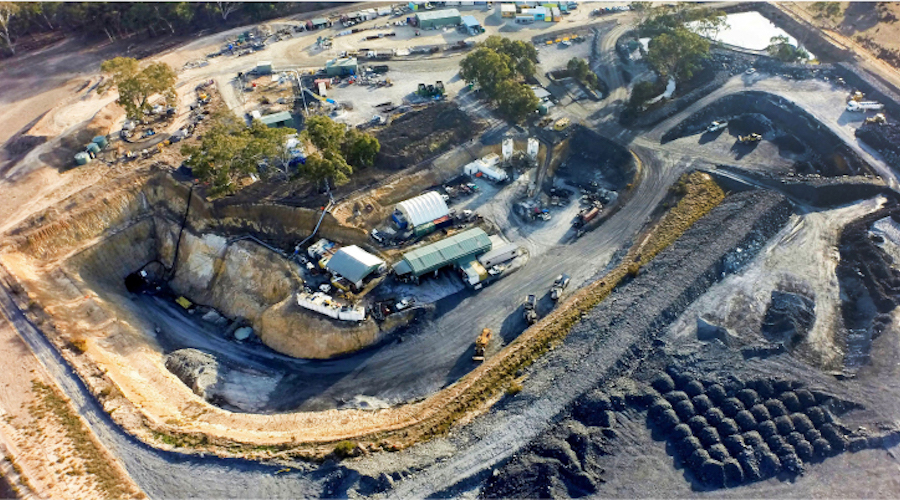
Costerfield was purchased in 2009, and the company restarted mining and set out a program of capital improvements. Mill capacity was increased to 13,000 tonnes per month in 2013 from 5,000 tonnes. The primary ore source was the Augusta mine, which has been operational since 2006 until 2013, when mining began at the Cuffley deposit, 500 metres north of Augusta. Ore from the Brunswick and Youle deposits are currently begin mined. Mandalay expects Youle to be the sole ore source by the third quarter this year. The life of mine is three to four years.
Proven and probable reserves, including underground and stockpiled ore, are 616,000 tonnes grading 12.8 grams gold per tonne and 3.5% antimony. Measured and indicated resources are 1.2 million tonnes grading 10.2 grams gold and 3.4% antimony, and the inferred resource is 473,000 tonnes grading 5.8 grams gold and 1.3% antimony.
Currently, ore is trucked to the surface at the August mine portal and treated in the Brunswick plant. The company is now planning a second portal at the Brunswick mine. Processing includes primary mobile crushing, primary and secondary ball milling, flotation (rougher-scavenger-cleaner), concentrate dewatering, and a gravity circuit. Gold recovered in gravity circuits is sold directly to a refinery in Melbourne, and concentrate containing both gold and antimony is shipped to a smelter in China. Production in 2020 was 44,958 oz. of gold and 3,903 tonnes of antimony.
Exploration recently led Mandalay to a new gold-rich structural domain below the Youle deposit. One of the early holes in the new Shepherd zone returned 460.5 grams gold over 0.1 metre. A new drilling platform was constructed, and the drill cut 231 grams gold over 0.2 metre. Another quartz vein system exhibiting coarse visible gold was intersected that intersected 23.6 grams over 6.3 metres. Another hole cut 3.5 metres of 10.9 grams gold.
Production guidance for 2021 at Costerfield is 44,000 to 49,000 oz. of gold and 2,700 to 3,000 tonnes of antimony, or 53,000 to 60,000 gold-equivalent oz. The all-in sustaining cost is $950 to $1,100 per oz.
Mandalay has an extensive exploration program as it outlines additional potential at Costerfield and continues to test extensions of the Youle deposit and the Shepherd zone at depth. Shepherd is a high-grade structural domain below the Youle deposit. Drilling in April returned 23.5 grams gold over a true width of 6.3 metres, 426.7 grams over 0.8 metre, and 231.7 grams over 0.2 metre. The mine has mineralogy at depth similar to that of Kirkland Lake Gold’s Fosterville gold mine, the company says.
In Sweden, Björkdal is an underground mine with longhole stoping and a mineral processing plant that includes gravity and flotation circuits. In 2020 it produced 45,296 oz. of gold.
Mandalay acquired the asset in 2014 when both the pit and underground were mined. The company closed the pit in 2019 to mine the underground Aurora zone. The mining rate reached 1 million tonnes in 2020, up 18% from 850,000 tonnes the year before. All-in sustaining costs are guided at $1,200 to $1,500 per oz. of gold produced.
At the end of 2020, Björkdal had probable reserves of 11.5 million tonnes grading 1.47 grams gold per tonne for 544,000 ounces. The mine has a remaining life of at least 10 years.
Paladin Energy
Paladin Energy (ASX: PDN; US-OTC: PALAF) has a plan to restart uranium production at the Langer Heinrich project in Namibia. Paladin holds 75% of that property and considers it to be the company’s core asset. Langer Heinrich is fully permitted to resume mining and uranium exports, but much work needs to be done. The project needs leach heating and mining upgrades to improve the extraction rate, a process control upgrade, thickener and pumping upgrades, a second Hydrosorter, and more.
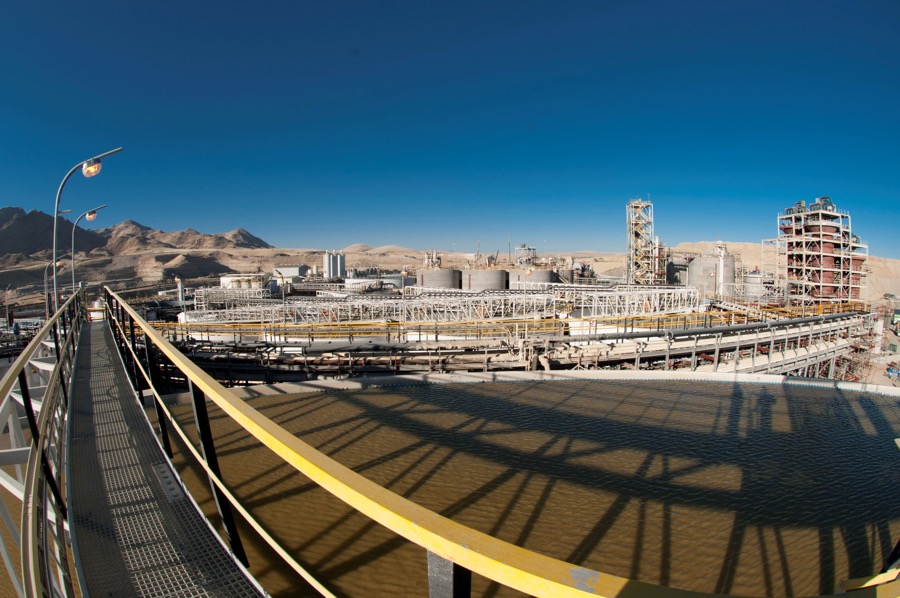
The mine could be reopened at a cost of $81 million and have a mine life of 17 years. Peak production would be 5.9 million lb. uranium oxide (U3O) in each of seven years.
In Australia, Paladin has two wholly owned, advanced exploration projects — Mount Isa (the largest uranium project in Queensland), and Manyingee (another potential uranium producer) in Western Australia.
Paladin holds six mineral development licences located 15 to 80 km north and east of Mount Isa. The Valhalla, Skal and Odin deposits are the most important. Those three contain 115.7 lb. U3O8 out of the 148.3 million lb. of contained metals estimated across all the licences.
In 2007 the company acquired an 82% stake in Summit Resources, which held the licences near Mount Isa. Paladin drilled 116,490 metres of diamond core and 148,740 metres of reverse circulation holes, boosting the resource by close to 20% to 148 million contained lb. U3O8. Then in 2018, Paladin acquired the minority shareholdings in Summit, taking its ownership to 100%.
The Mount Isa deposits have the potential to support an output between 5 million and 7 million lb. U3O8 a year using open-pit methods.
At Manyingee, Paladin has spent $17.9 million on exploration and believes there is potential for an in situ recovery at a rate of up to 2 million lb. U3O8 per year. A successful field leaching test was carried out in 1985 and an internal scoping study has been done. The property has a resource containing an estimated 41.5 million lb. U3O8. There are indicated resources of 8.4 million tonnes grading 0.985% U3O8, and inferred resources of 5.4 million tonnes also grading 0.085% U3O8.
About 100 km south of Manyingee is the Carley Bore uranium property acquired by Paladin in 2015. It is at the advanced exploration stage and could be either a stand-alone operation or a satellite ISR project to Manyingee.
In Canada, Paladin’s owns a 60% interest in the Michelin deposit in Labrador. The local Inuit community banned uranium exploration for a three-year period beginning in 2008, but work is underway again.
Michelin is among the largest uranium deposits in North America, and a resource estimate in 2014 by Paladin put the measured and indicated resource (combined pit and underground) at 30,081 tonnes grading 0.10%, containing 67 million lb. U3O8. The inferred resource was estimated as 16 million tonnes grading 0.10% U3O8 for 36 million lb. U3O8.
Rex Minerals
Rex Minerals (ASX: RXM) has two potential development assets — the Hillside copper-gold project in South Australia and the Hog Ranch gold project in Nevada.
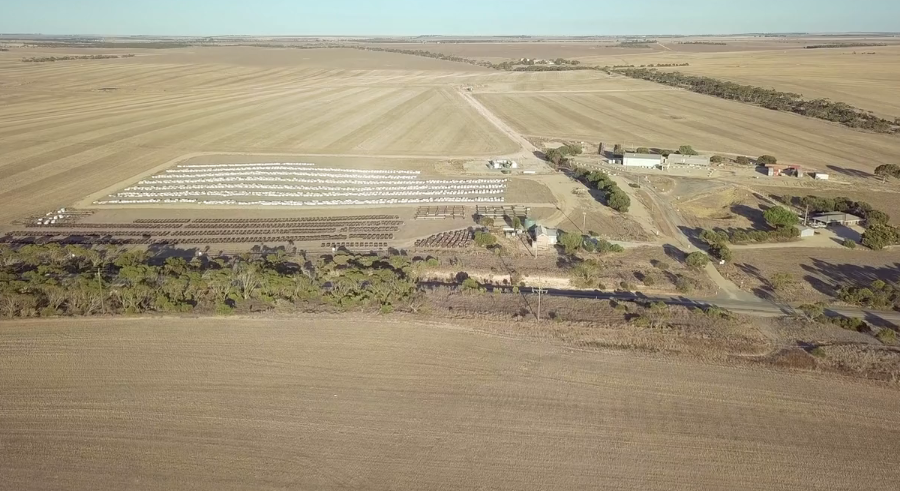
The company updated the feasibility study last year for its fully permitted Hillside copper-gold project. Pre-production capital costs of A$585 million ($544 million) will create an open pit with a mine life of 13 years in the first stage of development. Planned annual production is 35,000 tonnes of copper and 24,000 oz. of gold for the first 12 years from head grades of 0.66% copper and 0.17 gram gold per tonne. All-in sustaining costs are estimated to be $1.60 per lb. copper.
The project has a post-tax net present value (5% discount rate) of A$501 million ($372m) and an internal rate of return at 16.2%, and is permitted. The project is situated near ample infrastructure — power, water, road transportation. The port at Ardrossan is 12 km away and the port at Adelaide is only 160 km away by road.
The Hillside deposit is of the iron-oxide-copper-gold (IOCG) type, stretching 1.3 km north-south and 900 metres west-east. It remains open along strike and at depth. Rex puts resources at a JORC-compliant 337 million tonnes grading 0.6% copper and 0.14 gram gold per tonne. The portion classified as reserves for stage one is 82 million tonnes at 0.62% copper and 0.16 gram gold. There are an estimated 4.3 billion lb. of copper and 1.4 million oz. of gold in the resource.
A processing plant with conventional crushing, single-stage SAG grinding, and three-stage flotation will treat 6 million tonnes per year.
Rex has opportunities to extend the Hillside mine life beyond 25 years. Stage one will recover 500,000 tonnes of copper from the reserves as outlined in the feasibility study. Stage two will expand the pit, double the mine life and recover an additional 500,000 tonnes of copper. Stage three would see underground development as the mineralization is traced at depth. The final stage will see iron ore containing 12 million tonnes of iron stockpiled in the tailings storage facility. Copper and gold will be recovered from oxide ore that is initially treated as waste.
The Hillside region has excellent exploration opportunities. And there are several undrilled copper targets near the pit site.
Rex considers Hillside to be its flagship property, but it has an equally interesting gold property, Hog Ranch, in Nevada. The property produced gold from 1975 to 1992 from six open pits. Total output was 7.7 million tonnes of mineralized material at 1.23 grams gold per tonne. Site rehabilitation was completed in 1994.
Rex acquired the property in 2019 and updated the resource at Hog Ranch in March this year. Figures reflect ore in four separate deposits — Krista, Bell, Cameco and Airport. The indicated and inferred oxide resource totals 158 million tonnes grading 0.41 gram gold for 2.1 million oz. contained gold. Both categories of the sulphide resource total 165 million tonnes grading 0.43 gram gold for 150,000 ounces.
Last year a scoping study was done on the Bells project that put the after-tax net present value at US$75 million and the internal rate of return at 40%. Pre-production capex is $58 million, and the project offers an after-tax payback of 1.9 years. Heap leaching could produce 39,000 oz. gold per year during an 8.5-year leach operation.
Superior Gold
Superior Gold (TSXV: SGI; US-OTC: SUPGF) has no assets in Canada but is the sole owner of the Plutonic gold mine in Western Australia, about 800 km northeast of Perth. Since 2010, the Plutonic mine has produced an average of about 100,000 oz. gold a year.

Plutonic was mined as an open pit from 1990 until 2005, and underground production began in 1995. The mine has produced a total of 6 million oz. gold from both sources. The proven and probable reserves (open pit and underground) are 3.9 million tonnes grading 3 grams gold, containing 380,000 oz. gold. Measured and indicated resources at 16.3 million tonnes grading 3.6 grams gold, containing 1.9 million tonnes.
Superior Gold has embarked on a program of optimization, beginning with the addition of a third underground drill rig late last year. The rig will conduct infill drilling to increase resource confidence, improve stope production, and update mine planning. Other efforts involve adding two loaders and two trucks to the underground fleet to increase reliability, commissioning a gravity circuit and beginning a fine grinding study.
The Plutonic underground mine produced 63,065 oz. gold in 2020, but the company has plans to boost that to 100,000 oz. per year with the push-back project in the mine Main pit.
The push-back project has a post-tax net present value of A$120 million ($89 million) and a 35% internal rate of return with a capital commitment of A$82 million ($61 million). This project will access 16.3 million tonnes of measured and indicated resources grading 3.6 grams gold per tonne and 30.6 million indicated tonnes at 3.1 grams gold per tonne. The pit push-back will recover 357,000 oz. gold over a six-year life at $870 per ounce.
Superior Gold has a second mill in the area with total capacity of 1.2 million tonnes per year, but it is on care and maintenance. If head grades were 2 grams gold, having two mills in operation would boost annual output by 50% to 153,000 ounces.
In addition to the Plutonic mine, Superior Gold owns 100% of the Hermes open pit project, 65 km southwest of Plutonic. Hermes was mined from 2017 to 2019 with the ore being treated at the Plutonic mill.
The company also has an 80% interest in the Bryah Basin joint venture with Alchemy Resource, 85 km southwest of Plutonic. The project is in the permitting stage. Superior Gold is pursuing a regional exploration program in the Bryah Basin area.
(This article first appeared in The Northern Miner)




